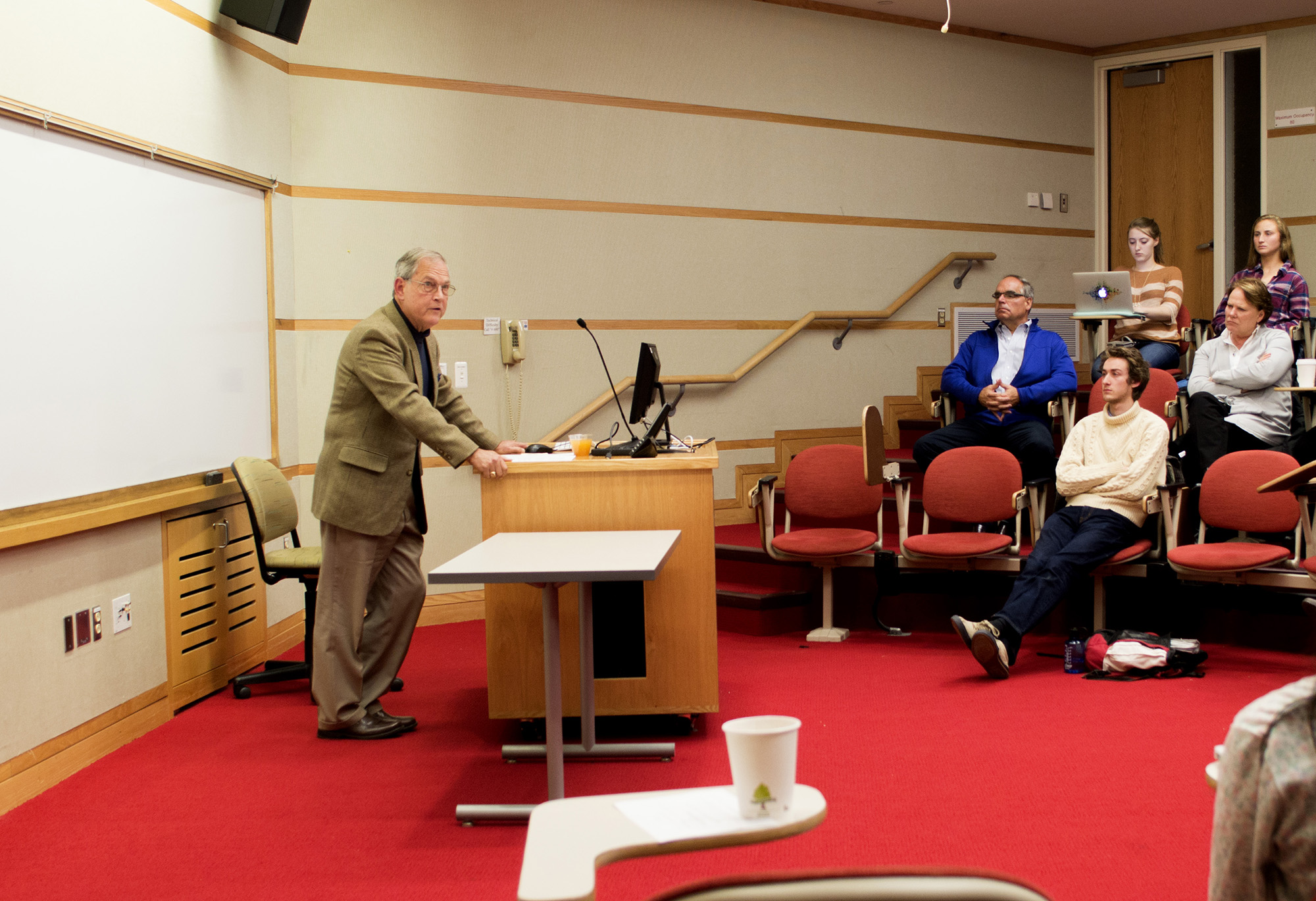
Author and fomer TIME journalist Barrett Seaman ’67 returned to Hamilton on Nov. 9 to discuss the role of journalism in modern society and the tendency of people today to cluster with other like-minded individuals. With the rise of accessible technology, this clustering has the consequence of making moderate and unbiased news a less valuable commodity. Seaman was the third guest in the SpecSpeak journalism series.
Even though technology is always changing, and has impacted the accessibility and accuracy of news for centuries, Seaman argues that it is important now more than ever for three reasons. First, technology has given public platforms to those who previously couldn’t express themselves, and similarly has supported a system where everyone can find ideas that they already agree with. Second, it has fostered an idea of political correctness. These effects ultimately lead individuals to cluster with similar-minded individuals and to shut out disagreeable ideas.
While the Internet and increasing technological efficiency has made news more accessible and has given people the platform to express their ideas in a free and unrestrained manner, this is not wholly conducive to free speech. This is somewhat counter-intuitive, but Seaman argues that the increasing accessibility of the Internet and technology as a whole has led to fragmentation when it comes to news sources.
For example, during much of the 20th century, individuals received their news from one of only a few sources. In contrast, the number of places where people can find news today is practically infinite. Consequently, to be seen or heard as a news outlet, it has become increasingly important to have eye-catching headlines. This has caused news outlets to gradually prioritize controversial and attention-grabbing events over unbiased and moderately reported news. Thus while the accessibility of news has, in one sense, given a voice to many who otherwise wouldn’t have been heard, in another sense it has essentially flooded the figurative newsstand and drowned the public desire for moderately and impartially presented facts.
Because the increasing technological advances became entangled with the radical social evolution we’ve seen over the past few decades, we’ve also seen conflicts erupt between traditionalists and progressives in journalism. The main difference, Seaman outlined, is that traditionalists “fear the loss of traditional structures” in society, and fear that changes to social dogmas will destabilize society. In contrast, progressives “argue for more respect” for evolving social groups and praise the reconsideration of old ideals and values.
This conflict, Seaman argued, is what bore the idea of political correctness. According to Seaman, it is this political correctness, in conjunction with the increased fragmentation of the media, which is responsible for what Bill Henry, a TIME writer, refers to as “fostering clusters of likeminded individuals.”
This idea of “fostering clusters” can be seen from a variety of perspectives. For example, we can see that the infinite number of expressive platforms allows everyone to find a source of news that they personally already agree with. In fact, many news and social media apps and websites will now automatically filter newsfeeds with what one’s perceived preferences are (whereas prior one had to manually choose to filter certain types of news), in effect only feeding you the type of news that you want to see, and not the news you may disagree with. This “helps to perpetuate the divide,” and inhibits constructive conversation on important social and political topics.
Seaman pointed to liberal arts colleges like Hamilton to further explore the ramifications of this ideological clustering. He noted that he was “disturb[ed] that almost all of the speakers invited to this campus are left of center, while almost all of the conservative-leaning speakers are invited by the AHI—a group not affiliated with the campus.”
Seaman said he is “disturbed that people stole copies of a conservative-leaning newspaper on campus” and that “people say they feel unsafe because an idea is disagreeable.” He argues that this way of thinking is not conducive to developing a useful and productive mind. In contrast, part of the liberal arts education should be to “get uncomfortable” and to “grapple with ideas that challenge your point of view.” The largest problem in this single-minded perspective, Seaman argues, is that “if no one challenges assertions—if skeptics are not welcome—dogma sets in stone.”
Ultimately, Seaman is disappointed with how people have started viewing the news, and how consequently there’s no economic support anymore for real, unbiased journalism. Americans vote with their views, and unfortunately that means that writers and editors at traditional journals and papers are being compelled to transfer their work online for better pay and mobility. Seaman predicts that one future solution could be to sell tablets and mobile devices with pre-paid subscriptions to papers like the New York Times or magazines like TIME.
Further, he argued that “if there were more wrestling with ideas in public, we’d all be healthier.” In the face of biased and factually inaccurate articles, Seaman encouraged people to “challenge what you think should be challenged, because we have the privilege and obligation.” Clearly, any changes in the journalism industry will only be made when there is demand for it, so it is the responsibility and duty of every involved citizen to be a smart and conscious consumer of media.
Posted November 10, 2015
